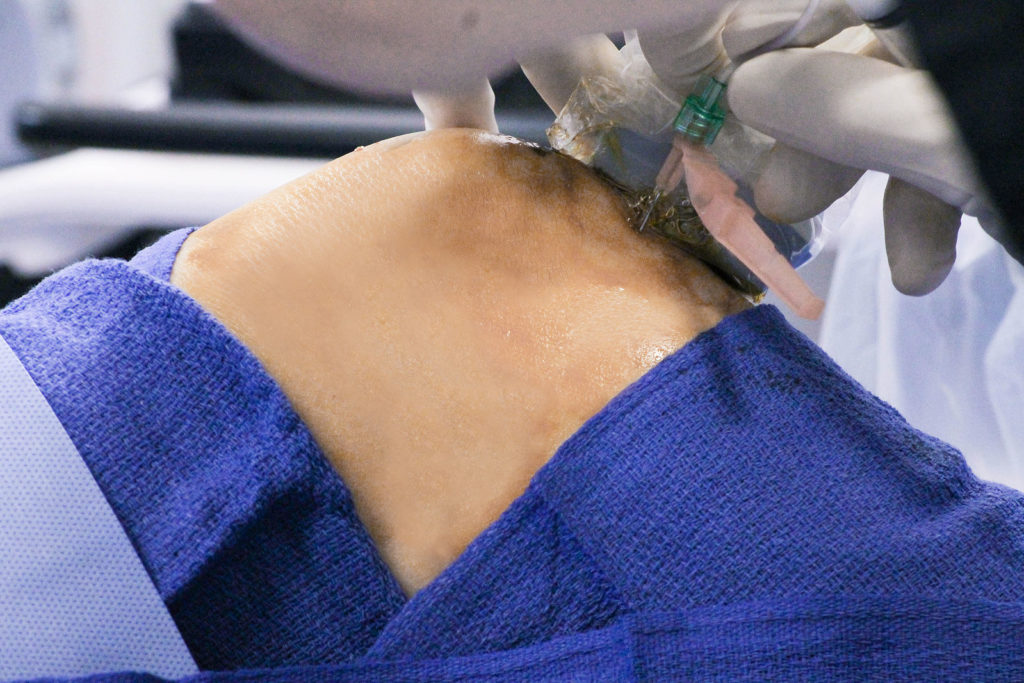Injections are given by a needle directly into the knee joint. There are two types of injections used to treat symptoms of knee osteoarthritis: joint lubricants (viscosupplementation) and cortisone (steroid injection).

PainDoctorUSA, CC BY-SA 4.0 https://creativecommons.org/licenses/by-sa/4.0, via Wikimedia Commons
Joint Lubricants (Viscosupplementation)
Articular cartilage is the smooth coating covering the surface of the bones inside the knee. It helps to lubricate and cushion the surfaces of the knee joint. In osteoarthritis, this coating is damaged leading to reduced lubrication and cushioning. This results in some of the pain, grinding, and other symptoms experienced by osteoarthritis-sufferers (see the osteoarthritis section for further information).
Viscosupplementation therapy involves injecting a clear gel-like substance directly into the knee joint. These injections help to restore some of the lubrication lost by damaged cartilage and thus improve symptoms. An injection is given as one shot into the knee joint each week for three weeks. Usually people who respond to this form of treatment will experience some improvement for six to ten months. An injection series can be repeated every six months as needed. This method of therapy is used for people who have not benefited from less invasive therapies such as lifestyle modification, physiotherapy, and oral medications. The injections do carry a small risk of infection or allergic reaction to the lubricant itself mon brands include Synvisc© and Neovisc©. Physicians and orthopaedic surgeons can provide additional information about the risks and benefits of this procedure.
Injectable Cortisone
Physicians can inject a powerful anti-inflammatory drug called cortisone (or corticosteroid) directly into the joint. Cortisone injections are reserved for people with a severely inflamed knee with uncontrolled pain. Cortisone injection can provide rapid relief from a tender, swollen osteoarthritic knee which has failed to respond to other forms of treatment. The benefit of an injection may last anywhere from a few days to more than 6 months. Injections may be less effective with each successive injection.
It should be noted that although cortisone is a steroid, it differs from the performance enhancing steroids used by some athletes and discussed in the media. Injectable cortisone does not have the side effects associated with such steroids. There are however some risks associated with cortisone injection. Repeated injections may promote the breakdown of articular cartilage, which is the cause of osteoarthritis in the first place. For this reason, multiple injections are not usually recommended. There is also a small risk of infection or allergic reaction to the steroid preparation. Some patients may experience a “steroid flare” in which the joint becomes more inflamed for 2-3 days following injection. Anti-inflammatory medications and/or ice may prevent or control this reaction. Doctors should explain all the risks and side effects prior to giving any steroid injection.
To read more about osteoarthritis of the knee please visit the links section. Links have been provided to other websites as well as online medical journals. Knee injury topics can also be accessed.
